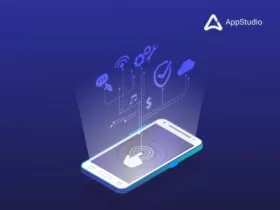In today’s digital age, the demand for mobile applications is increasing at an unprecedented rate. However, developing apps that work seamlessly across multiple platforms can be a daunting task for developers. This is where cross-platform app development frameworks come into play. These frameworks provide developers with the tools and resources to create mobile apps that can run on various operating systems, such as iOS and Android, without having to write separate code from scratch.
In this article, we will explore the top five cross-platform app development frameworks that have gained popularity among developers worldwide. We will delve into their key features and advantages, allowing you to make an informed decision when choosing the right framework for your next app project.
Why Cross-Platform App Development is Important
Cross-platform app development has gained immense popularity in recent years due to its numerous advantages. One of the main reasons why cross-platform app development is important is its ability to save time and resources. With cross-platform frameworks, developers can write code once and deploy it on multiple platforms such as iOS, Android, and Windows. This eliminates the need for separate teams of developers for each platform, reducing costs and increasing efficiency.
Another key benefit of cross-platform app development is the wider audience reach it offers. By developing an app that can run on multiple platforms, businesses can target a larger user base without having to invest in separate native apps for each platform. This not only increases the chances of reaching potential customers but also allows businesses to provide a consistent user experience across different devices.
Furthermore, cross-platform frameworks often come with built-in tools and libraries that simplify the development process. These frameworks offer a range of features such as UI components, debugging tools, and integration capabilities that streamline the app development process. This makes it easier for developers to create high-quality apps with fewer bugs and glitches.
The 5 Best Cross-Platform App Development Frameworks
1. React Native: The Power of JavaScript
React Native is one of the top cross-platform app development frameworks that utilize the power of JavaScript. With React Native, developers can write code once and deploy it across multiple platforms like iOS and Android, saving time and effort. By using JavaScript as its programming language, React Native offers a familiar syntax for web developers, making it easier to learn and use.

The power of JavaScript in React Native lies in its ability to create highly performant mobile applications. JavaScript allows developers to build responsive user interfaces that provide a seamless experience for users. Additionally, with the help of various libraries and tools available in the JavaScript ecosystem, developers can easily integrate features like animations, navigation systems, and push notifications into their React Native apps.
Furthermore, by leveraging the power of JavaScript’s large developer community, React Native enables developers to access a vast range of resources and support. The extensive documentation and active online communities make troubleshooting issues or finding solutions much more convenient for developers using React Native. Overall, with its reliance on JavaScript as a powerful programming language combined with its cross-platform capabilities, React Native offers immense potential for building high-quality mobile applications efficiently.
2. Flutter: Google’s UI Framework for Building Apps
Flutter is Google’s open-source UI framework that allows developers to build beautiful and fast native apps for iOS and Android. It enables developers to write code once and deploy it across multiple platforms, saving time and effort in the development process. With its rich set of pre-designed widgets, Flutter makes it easy for developers to create stunning user interfaces that are consistent across different devices.

One of the key benefits of using Flutter is its hot-reload feature, which allows developers to see the changes they make in real-time without having to restart the app. This significantly speeds up the development process and makes it easier for developers to iterate on their designs. Additionally, Flutter provides a rich ecosystem of packages and plugins that extend its functionality, allowing developers to add features like camera access, maps integration, and more with just a few lines of code.
Many top companies have adopted Flutter for their app development needs due to its performance capabilities and ease of use. The framework’s ability to deliver pixel-perfect UIs at 60 frames per second has made it a popular choice among mobile app developers. As cross-platform app development continues to gain traction in the industry, Flutter has positioned itself as one of the leading frameworks for building high-quality apps efficiently.
3. Xamarin: Microsoft’s Open-Source Mobile App Platform
Xamarin is a popular open-source mobile app platform developed by Microsoft. It allows developers to build cross-platform applications using a single codebase, saving time and effort. With Xamarin, developers can create native apps for iOS, Android, and Windows using C# programming language.

One of the main advantages of Xamarin is its ability to provide a native user experience across multiple platforms. It allows developers to access platform-specific APIs and features without compromising on performance or UI design. This makes it an ideal choice for businesses looking to reach a wider audience with their mobile apps.
In addition to its cross-platform capabilities, Xamarin also offers robust tools and libraries that simplify the app development process. It provides a comprehensive set of debugging and testing features, along with a vast collection of pre-built UI components and controls. This not only speeds up development but also ensures the quality of the final product.
Overall, Xamarin is highly regarded as one of the top cross-platform app development frameworks due to its versatility, performance, and extensive support from Microsoft. Its open-source nature also fosters an active developer community that continuously contributes to its improvement and enhancement.
4. PhoneGap: Create Mobile Apps Using Web Technologies
PhoneGap is one of the top cross-platform app development frameworks available today. It allows developers to create mobile apps using web technologies such as HTML, CSS, and JavaScript. With PhoneGap, developers can write code once and deploy it across multiple platforms like iOS, Android, and Windows Phone.

One of the major advantages of using PhoneGap is its ability to access native device features using a simple JavaScript API. This means that developers can leverage features like camera access, accelerometer data, and geolocation without having to learn platform-specific languages or APIs.
Furthermore, PhoneGap provides a streamlined development process by allowing developers to use familiar web technologies for building their apps. This reduces the learning curve and allows for faster development times. Additionally, PhoneGap offers a wide range of plugins that extend its functionality even further, making it suitable for creating complex mobile applications with ease.
Overall, PhoneGap is an excellent choice for developers looking to create cross-platform mobile apps using web technologies. Its simplicity and flexibility make it a popular framework among both beginners and experienced developers alike.
5. Ionic: A Complete Open-Source SDK for Hybrid App Development
Ionic is a comprehensive open-source software development kit (SDK) that enables developers to create hybrid mobile applications. It is considered one of the top five cross-platform app development frameworks available today. With Ionic, developers can build applications using web technologies such as HTML, CSS, and JavaScript, which are then wrapped in a native container for deployment on various platforms.

One of the key advantages of using Ionic for hybrid app development is its extensive library of pre-built user interface components. These components are optimized for mobile devices and provide a consistent look and feel across different platforms. Additionally, Ionic offers a range of tools and services that simplify the development process, such as live reloading for instant previewing of changes and testing on multiple devices simultaneously.
Another notable feature of Ionic is its integration with AngularJS, a popular JavaScript framework for building web applications. This integration allows developers to leverage AngularJS’s capabilities for creating powerful and responsive user interfaces while utilizing Ionic’s native-like performance on mobile devices. Overall, Ionic provides an efficient solution for developing hybrid apps that deliver a seamless experience across multiple platforms without sacrificing performance or functionality.
Conclusion: Choosing the Right Cross-Platform Framework
In conclusion, choosing the right cross-platform framework for app development is a crucial decision that can greatly impact the success of your project. The top 5 frameworks discussed in this article each have their own strengths and weaknesses, making it essential to carefully evaluate your specific requirements before making a choice.
React Native stands out as a powerful framework with a large community and excellent performance. Its ability to create native-like apps quickly makes it an attractive option for many developers. Flutter offers impressive UI capabilities and smooth animations, but its relatively new entry into the market may mean fewer resources and support compared to other frameworks.
Ionic provides developers with an extensive set of pre-built components, making it ideal for building prototypes or simple applications. Xamarin offers seamless integration with Visual Studio and allows developers to leverage existing .NET skills, while PhoneGap presents an easy-to-use solution for web developers looking to build mobile apps. Ultimately, the right choice depends on factors such as project complexity, desired user experience, available resources, and developer expertise.




























